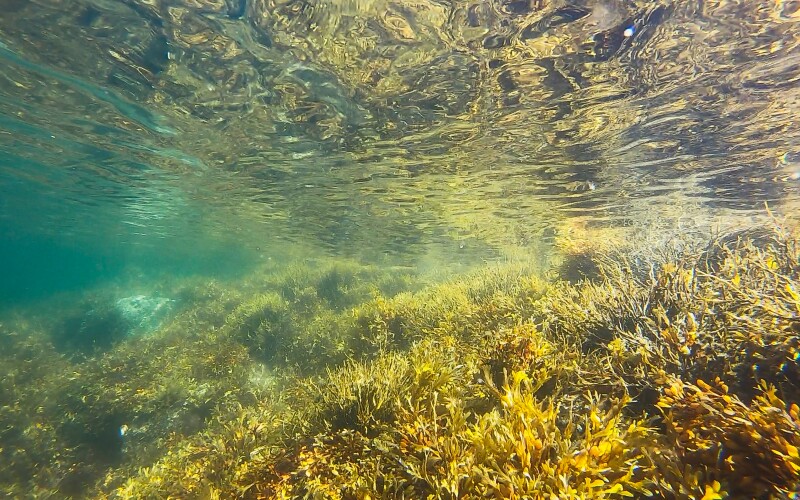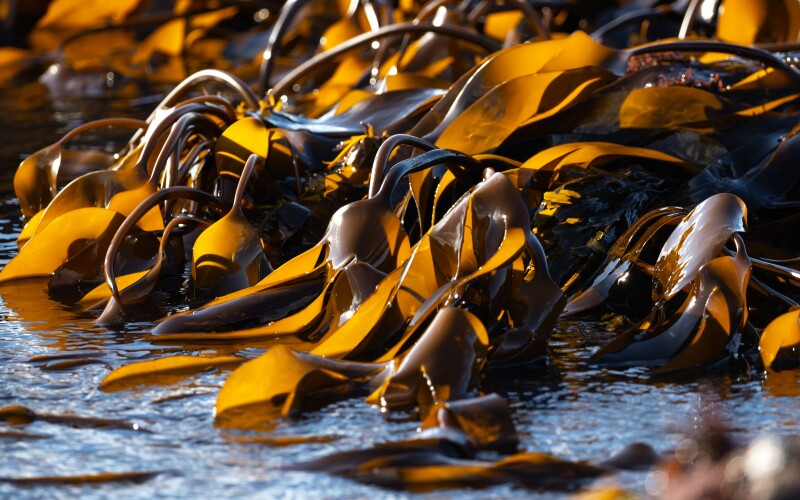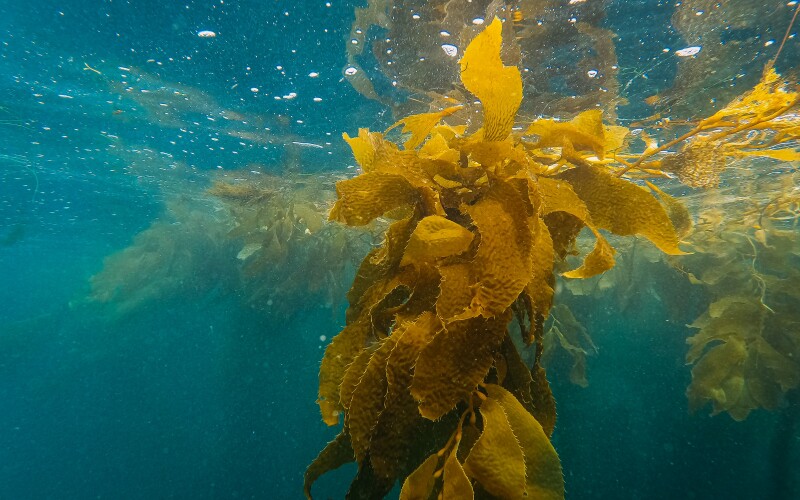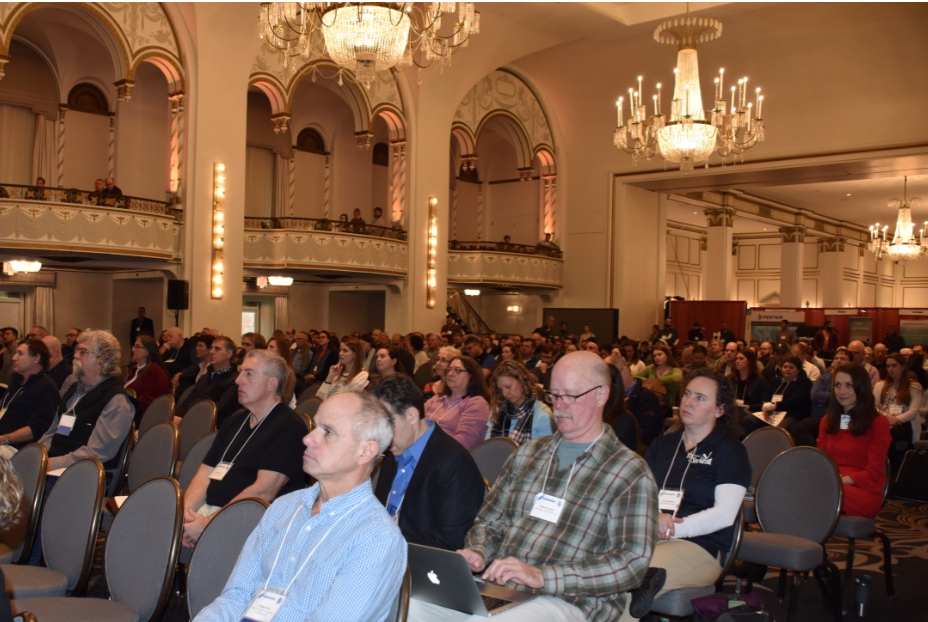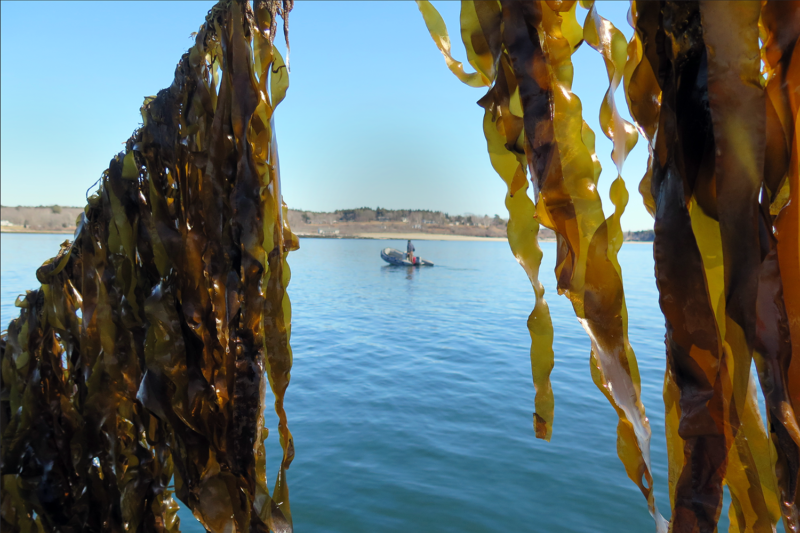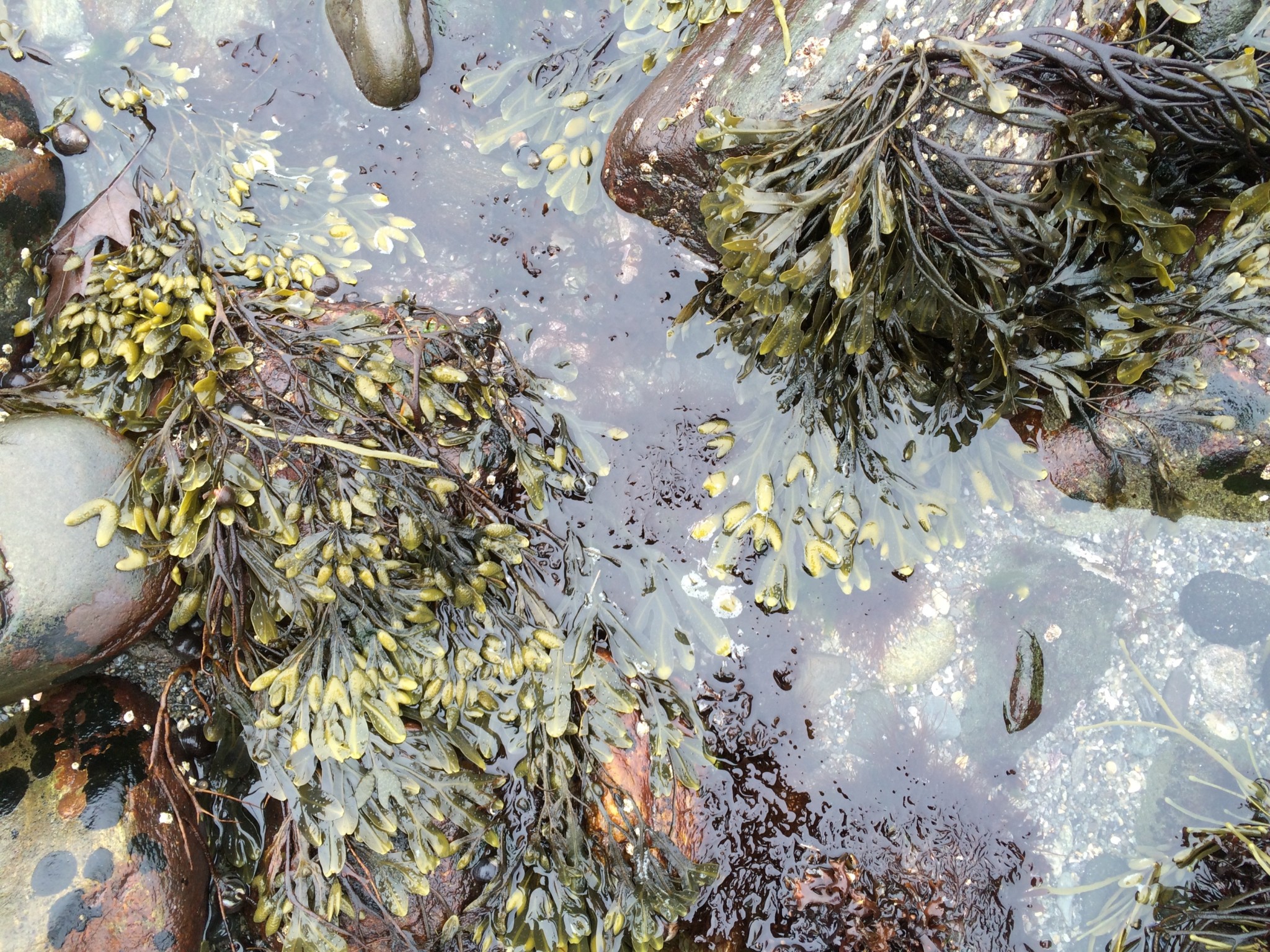Tribe's vision for a new marine sanctuary may be coming true
Published onThe central California coast, with its rugged beaches and kelp forests, draws a lot of visitors for its scenic beauty. For the Chumash people, the coastline means a lot more. "Almost all the places people like to go to are our sacred sites," says Violet Sage Walker, chairwoman of the Northern Chumash Tribal Council. "We've been going there and praying and doing ceremony there for 20,000 years." Read more
Read MoreAlaska's newest gold rush: seaweed
Published onCORDOVA, Alaska Dune Lankard piloted the gleaming gill-net fishing boat to Simpson Bay, where eight buoys bobbed in the sunlight. The bright orange inflatables, connected by lines and spread out across five acres, provided the only indication of the ocean farm that lay beneath the waters surface. Read more
Read MoreStudy: At-risk kelp forests provide billions of dollars in benefits
Published onAlmost a third of the globes coastal environments rely on kelp to reduce local pollution and sustain fisheries that provide billions of dollars in benefits, according to a new study. But the climate crisis, overfishing, invasions of voracious sea urchins and pollution are putting at risk the worlds kelp forests, threatening the economic benefits they provide and the huge array of species they support. Read more
Read MoreAlaska's competition for Senate seat offers Prescription for Change
Published onIt was inaction on health care that ultimately made Dr. Al Gross of Juneau decide to challenge Republican Dan Sullivan, who is running for a second, six-year term to represent Alaska in the U.S. Senate. Gross, who has opted for the Independent ticket, has fished his whole life, his four kids have fished to pay for college, and he left a 20 year career as an orthopedic surgeon to get a degree to go to work in public health. His campaign claims Dr. Gross has the Prescription for Change. As a doctor, I stepped up and proposed a means of fishermen obtaining affordable health care, which I know is a really big deal because so many of my friends are commercial fishermen. Seeing how much they're spending to buy individual policy plans really hurts their bottom line. It's a real struggle, Gross said in a phone ...
Read MoreScientists, harvesters, farmers talk shop at Northeast Aquaculture Conference
To open the Northeast Aquaculture Conference and Exposition on January 9, a panel of ten experts from Prince Edward Island to New Jersey fired off a round of challenges into the ballroom of the Boston Park Plaza Hotel: labor shortages, complex regulations, public opposition, and climate change, among them. But, for all the concerns, the aquaculture industry represented by some 550 attendees seemed buoyantly optimistic, despite the absence of federal employees furloughed by the partial shutdown of the federal government, many of whom were speakers. “It’s an aquaculture pep rally,” said Matt Gregg of the Barnegat Oyster Collective in Barnegat Light, N.J., describing the three-day conference, which included field trips, research presentations, and a tradeshow. Farm-raised seafood is the fastest growing food sector worldwide, according to the UN Food and Agriculture Organization. Globally, aquaculture supplies more than 50 percent of all seafood people eat. First-time ...
Read MoreMaine seaweed landings, value grow as southern kelp forests decline
Despite a significant wild-harvest industry, the long-term outlook indicates a shift toward seaweed aquaculture along the northeast U.S. coast. Nearly two dozen licensed farms operate from New York to Maine, and they contribute niche value-added products to the marketplace. The wild industry is centered on Maine, which in 2018 had 133 licensed harvesters, says Jeff Nichols of Maine’s Department of Marine Resources. “Rockweed has consistently comprised over 95 percent of all landed seaweed,” added Nichols. Four years back, the nearly 19 million pounds of rockweed landed represented 97.6 percent of all seaweed landed in Maine. Landings and value have notched up in 2017. In 2016, Maine’s seaweed industry landed 17 million pounds worth $616,578 and in 2017, landed almost 20 million pounds worth $771,963. The Maine Aquaculture Association and Maine Seaweed Council both focus on the sustainability of the aquaculture industry ...
Read MoreSea greens aquaculture continues to grow in the Northeast
While China reigns as top producer of cultured seaweeds in the $10.3 billion global industry, an edible seaweed fishery continues to expand and diversify New England’s coastal economies — particularly where other fisheries have declined or disappeared. In 2016, Maine’s Department of Marine Resources counted a statewide harvest of about 14 million pounds, valued at $468,105. Despite a much larger wild-harvest commercial industry, the long-term outlook indicates a shift toward seaweed aquaculture. With a winter growing season from fall to spring — opposite busy lobstering and East Coast tourist seasons — cultured seaweeds are filling a niche. Currently, commercially important northeast species include: sugar kelp (Saccharina latissima) with smaller quantities of winged kelp (Alaria esculenta) and horsetail kelp (Laminaria digitata). “Today, about 17 farmers from New York to Maine operate under licenses from their own state,” said Charles Yarish, a biologist at the University of Connecticut. “But ...
Read More




